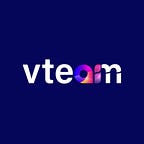Comparing Text-to-Image models: DALL-E and Stable Diffusion
READ FULL BLOG HERE
VTeam | Behind the Scenes of Text-to-Image models: DALL-E and Stable Diffusion
DALL-E and Stable Diffusion represent significant breakthroughs in text-to-image synthesis within the dynamic world of artificial intelligence. OpenAI’s DALL-E not only converts textual prompts into stunning visuals but also exhibits an unparalleled imaginative flair. This blog post will uncover the magic of these models, highlighting their revolutionary impact on creativity and innovation in AI-driven artistry.
In the realm of artificial intelligence and generative modeling, two extraordinary advancements have emerged, forever altering the landscape of creative content generation. DALL-E and Stable Diffusion, although distinct in their approaches, share a common goal: to bridge the gap between textual descriptions and vivid, photorealistic images.
DALL-E, introduced by OpenAI, ignited a creative revolution by demonstrating the remarkable potential of text-to-image synthesis. It captured the imagination of the world by generating images that sprung to life from mere textual prompts. But the story doesn’t end there. In 2022, Stable Diffusion emerged as an open-source, text-to-image diffusion model, poised to rival DALL-E’s capabilities while offering unique advantages.
This blog delves into the inner workings of DALL-E and Stable Diffusion, unraveling the intricacies of how these models transform text into tangible, visual art. We will explore their origins, the technology that powers them, and their real-world applications. By the end of this journey, you’ll gain a profound understanding of the magic behind text-to-image generation and the exciting possibilities it unlocks for creativity, communication, and innovation.
So, fasten your seatbelts as we embark on a captivating exploration of DALL-E and Stable Diffusion, two pioneers reshaping the boundaries of AI and artistry. We will start off with.
DALL-E
DALL-E, which stands for “Data-Driven Artificial Language Learning Engine,” is a groundbreaking artificial intelligence model developed by OpenAI. This innovative model is designed to bridge the gap between textual descriptions and image generation. DALL-E gained widespread recognition for its remarkable capabilities and creative potential.
- Text-to-Image Synthesis: DALL-E excels at transforming textual descriptions into visually stunning images. You can provide it with written prompts like “a two-story pink house shaped like a shoe” or “a painting of a futuristic city at night,” and it will generate corresponding images.
- Creative Imagination: One of DALL-E’s standout features is its ability to conjure up entirely novel and imaginative concepts based on textual input. It can generate artwork that goes beyond conventional representations.
- Multimodal Understanding: DALL-E demonstrates an understanding of both text and images. It can combine elements from different textual prompts to create composite images, showcasing its ability to grasp context and blend ideas.
- Customization: Users can fine-tune DALL-E’s output by specifying aspects like the image’s style, content, or other attributes through detailed prompts, providing a high degree of creative control.
- Wide Range of Applications: DALL-E has diverse applications, from generating visual content for storytelling, design, and art to aiding in brainstorming and concept visualization.
Stable Diffusion
The Stable Diffusion model is a powerful generative artificial intelligence (AI) model primarily used for generating detailed images from text descriptions or prompts similar to DALLE
- Text-to-Image Generation: Stable Diffusion is designed to convert textual input, such as descriptions or prompts, into photorealistic images.
- Based on Diffusion Techniques: The model utilizes diffusion techniques, specifically a latent diffusion model, to create images. This involves adding controlled noise to an initial random noise signal and gradually removing it to match the text prompt.
- Multimodal Outputs: In addition to images, Stable Diffusion can also be used to generate videos and animations from text and image prompts.
Read about the architecture and results comparison over 3 similar pormpts in the below blog
VTeam | Behind the Scenes of Text-to-Image models: DALL-E and Stable Diffusion
